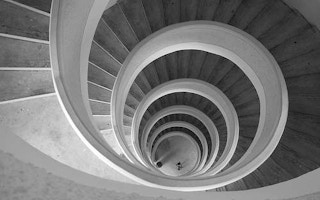There is a widespread misperception within the construction sector of what it really means to reduce the environmental load of buildings. While efforts to save energy are intensifying, other aspects are often forgotten. This article presents what sustainable construction should be in a seven step process.
The construction sector has enormous environmental impact. From a climate perspective alone, buildings’ greenhouse gas emissions are significant and growing fast. Furthermore, construction materials are responsible for tremendous damage through mining, deforestation and other impacts resulting from their production and supply. Without major changes in practices, at some point this century we will simply run out of some of the key resources (e.g. certain metals) required to keep up with the explosive growth in building demand. We are simply exploiting resources at a much greater rate than the planet can sustain.
While most current efforts in sustainable construction projects are put into energy efficiency, sustainability is not limited to this aspect. Another apparent trend is that still too often thoughts on how to make new buildings “green” are only addressed in the final stages of construction (retrofitting). While this practice is relevant to existing buildings, it is the wrong approach for new buildings. The vast majority of successful sustainability elements in a construction project goes into the initial design.
1. Preserving the terrain/vegetal coverage: Most construction project managers still choose the easiest and most destructive option of clearing all vegetation from a construction site. We must understand that any trees (especially grown ones) are valuable in terms of biodiversity and ecosystem services, and take a long time to regrow. It makes more sense to preserve them on site and to adapt the construction design in consequence. There are few examples of constructions which have successfully managed to preserve trees and built around them, or even incorporated them within the structure.
Any sustainable construction project should take this point into consideration and at most displace the trees and re-plant them rather than cutting them down. This point becomes increasingly important in locations that are rich in biodiversity or un-touched forested terrains. Furthermore, building projects should then work towards replanting numerous new trees and plants on site (preferably local species). Other important elements that any modern sustainable construction projects should adopt involve extensive use of the now well proven technologies of rooftop gardens and vertical green walls, which significantly increase the vegetal coverage and provide a range of other benefits.
2. Maximising natural cooling/heating: In warm climates, it is very important during the design stage to plan for maximising the use of natural air flow and cooling. This can be achieved in a range of ways, starting from buildings dispositions and how they are conceived to amplify and capture air breezes. There are also a number of passive ways to capture wind and create air flows within buildings through a chimney effect. Simply using well-chosen materials can help maximise natural cooling as well. Any passive cooling effect will contribute to significantly reducing the energy load of the buildings. Excessive use of air conditioning (which is a major source of energy usage in warm countries) is the less desirable alternative and often due to poor cooling efficiency design. In cooler and temperate climates, the same principle and efforts should be applied in designing well insulated projects that retain and circulate the heat with minimal energy input.
3. Maximising natural lighting: Another very important aspect to consider at the design stage is the maximum use of natural lighting. The best way to achieve this is once again through good design that takes into account aspects such as building orientation, open concept and the type of material used. Whatever can be done to naturally brighten indoor spaces will reduce the need for artificial lights at a later stage. The vast majority of buildings use artificial lighting during daytime simply because nobody considered lighting during the design process.
4. Choosing core sustainable construction materials: Most buildings today use unsustainable materials such a conventional concrete for their core construction. There are now a number of alternatives, including modified cement that contains a high percentage of recycled material (e.g. fly ash), materials from more sustainable sources (e.g. bamboo, pine trees from well managed plantations) or raw materials from natural sources such as clay (e.g. mud bricks). Moreover, certain construction techniques can significantly reduce the use of structural steel (e.g. Ferro-cement) and the amount of material used (e.g. geodesic designs, partial underground structures). But probably one of the simplest alternatives is to start to integrate a much greater proportion of reused materials in new construction projects; even today the vast majority of materials at demolition sites is being wasted. In addition to these measures, much more research is required to develop more sustainable materials.
5. Retrofitting’s: Once a building’s design and core construction is complete, numerous factors such as appliances and materials still need to be considered. As a general rule any appliances going into such a project should have fewer environmental impacts than similar products on the market. Certain organisations identify and certify such products using eco-labels, energy and water efficiency labels, etc., and a wide range of certified products are now available for developers to choose from. In addition to the environmental impacts of products throughout their life cycle, aspects such as indoor air quality (some products pollute the indoor air with chemical emissions such as formaldehyde) should also be considered. A number of new technologies can be installed in buildings to allow developers to further conserve resources.
6. Energy and resources independence: Most locations still rely on fossil fuel based electricity. It makes little sense for a sustainable building to source its energy from such supplies, which are putting a heavy load on our environment. There are now options to build construction projects that are completely off-grid and rely on a combination of renewable energy sources such as solar, wind and geothermal. With a good design, it is easy to produce more energy than a building actually needs. The same independence concept applies to other resources. In fact any so-called sustainable building should now seriously look at ways of closing resource loops through projects now proven as feasible and profitable through initiatives such as:
- Collecting and filtering rainwater and re-distributing the excess to the grid
- Producing electricity from renewable sources and redistributing the excess to the grid
- Collecting waste and valuing it by reusing certain types in a closed-loop model or reselling or distributing unwanted items, which in many cases can be seen as valuable resources for other businesses
Pushing the concept further, some buildings are starting to explore the idea of producing part of their food supplies on site or nearby the structures. Vertical farming and eliminating the reliance on external sources is key for the buildings of the future.
7. Management: Last but not least, even if a building is well designed and retrofitted with environmentally friendly features, the human factor still plays an important role in how resources are used. It is therefore important that any sustainable building is managed in an environmentally friendly way and operates according to clear environment management guidelines.
For the reasons given above, green buildings will only really take off once much more attention is given to training the people involved in the development of buildings, including architects, developers and designers, and providing them the tools to design and construct more sustainably. Government support through stricter legislations and incentives will drive the movement forward.
The real concept of a sustainable building is that of a ‘living building’, by which I mean buildings that give more back to the environment than they take. We must shift from the current environmentally destructive construction projects to some that provide long term benefits both to the environment and society. A combination of good design and smart, efficient technology is the formula to adopt; and designing buildings with sustainability in mind from the beginning should be compulsory.
On a last note, we must understand that sustainable buildings don’t only make sense in terms of reducing the environmental impact, but they also increasingly make good business sense for the security and savings that can be achieved.
Sylvain Richer de Forges is head of sustainability at Siloso Beach Resort.











